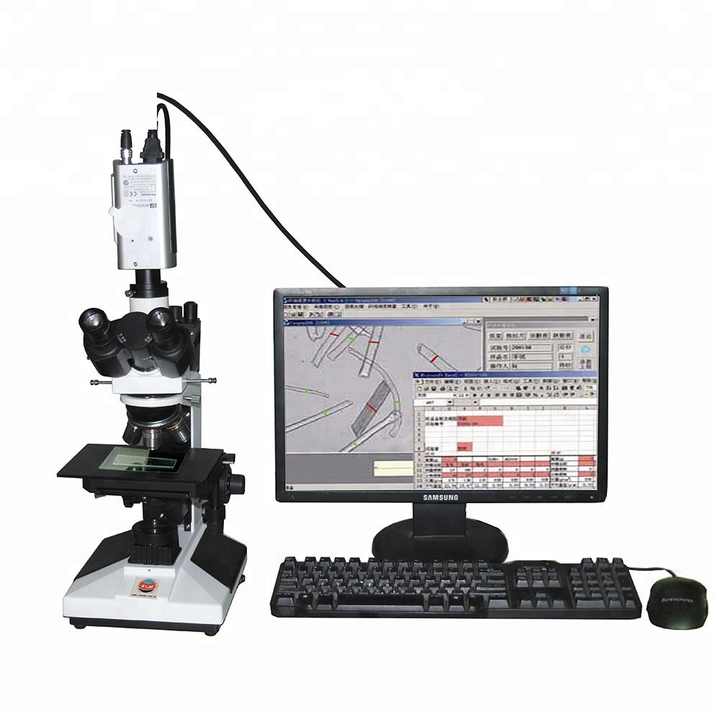Breakthroughs in Optical Fibre Diameter Analyser Measurement Tools
Breakthroughs in Optical Fibre Diameter Analyser Measurement Tools
Blog Article
Enhance Your Fibre Optic Projects With an Efficient Diameter Analyser
The assimilation of an effective diameter analyser into fibre optic jobs works as an essential aspect in accomplishing accuracy and uniformity. By promoting precise diameter measurements, these analysers not just improve the quality of installments yet additionally reduce prospective compatibility issues amongst elements. The innovative capacities of modern analysers improve information collection and high quality control procedures. As we discover the important attributes and benefits of these devices, it becomes apparent just how they can transform project outcomes and ensure adherence to sector standards. What remains to be reviewed is exactly how to effectively carry out these analysers in your existing process.
Significance of Size Measurement
Measuring the size of fiber optic cables is a vital job that makes certain ideal performance and integrity in interaction systems. Accurate diameter dimension is important for numerous reasons, largely for keeping signal integrity and decreasing loss. A cable's size straight affects its ability to transfer light effectively; variances from the defined size can cause enhanced depletion, which impacts the overall performance of the network.
Moreover, precise dimension is crucial during the installment and maintenance of fibre optic systems. An inappropriate fit between cords and ports can result in signal deterioration or full failing of interaction links. By making certain that diameters are within defined tolerances, service technicians can improve compatibility in between elements, causing better system reliability.
On top of that, diameter dimension plays a substantial function in quality control during manufacturing. Uniformity in the diameter of fiber optic wires is crucial for making sure uniform performance across different batches. optical fibre diameter analyser. This consistency helps makers keep industry standards and fosters self-confidence amongst end-users
Features of an Effective Analyser
An effective analyser for fiber optic tasks have to integrate a number of vital features that improve accuracy and use in diameter dimension. First of all, high-resolution optical sensors are crucial for precise diameter readings, allowing customers to identify even the tiniest variants in fibre density. These sensors need to be complemented by advanced calibration systems, ensuring regular efficiency across various conditions and products.
Second of all, a straightforward interface is critical for facilitating ease of operation. This includes user-friendly software application that permits smooth information input and outcome, in addition to visual representations of the dimensions taken. A mobile design enhances usability in different field environments, making it simpler to perform assessments on-site.
Additionally, the analyser needs to sustain multiple dimension modes, fitting numerous fibre types and applications. The capability to store and get historic data is one more important attribute, allowing customers to track performance with time and make notified choices.
Benefits for Fiber Optic Projects
Implementing a diameter analyser in fiber optic tasks provides substantial advantages that substantially improve project effectiveness and top quality. Among the primary advantages is the capability to guarantee accurate dimensions of fiber diameter, which is critical for preserving optimal efficiency in fiber browse around this web-site optic systems. Precise diameter analyses help in the recognition of variances that could cause indicate degradation or loss, hence making sure top notch transmission.
In addition, using a diameter analyser streamlines the quality assurance process. By automating dimension jobs, project groups can reduce the moment invested in hand-operated evaluations, resulting in faster task completion and decreased labour costs. This performance also enables even more extensive testing protocols, leading to enhanced product dependability.
Moreover, consistency in fibre diameter dimensions promotes compatibility with various other fibre optic elements, decreasing the risk of setup errors and boosting overall system performance. The unification of a diameter analyser not only aids in maintaining market standards but also fosters self-confidence in job deliverables.
Assimilation Into Existing Operations
Integrating a size analyser right into existing process can considerably improve the operational efficiency of fiber optic jobs. By perfectly incorporating this technology, teams can attain accurate measurements that are critical to maintaining the stability and performance of fiber optic systems. This combination permits real-time information collection and analysis, which can be essential throughout the manufacturing and installation stages.
Furthermore, the capacity to automate diameter look at here measurement procedures reduces the capacity for human error, making certain constant top quality control throughout the task lifecycle. The data created can be easily shared across systems, helping with partnership amongst designers, technicians, and task managers. This ease of access enhances decision-making and speeds up task timelines.

Selecting the Right Diameter Analyser
When selecting a diameter analyser for fiber optic tasks, it is vital to think about several crucial variables that straight impact measurement accuracy and functional efficiency. Initially, the resolution and accuracy of the analyser ought to straighten with the details needs of your task. Higher resolution tools can spot minute variants in size, which is vital for making certain ideal efficiency in fibre optic systems.
For tasks with limited target dates, a size analyser that uses fast data procurement can dramatically improve productivity. Additionally, think about the analyser's compatibility with existing systems and software program.
Another essential variable is the variety of sizes the analyser can accommodate. By carefully examining these you can check here variables, you can choose a diameter analyser that improves the performance and accuracy of your fibre optic jobs.
Final Thought
In conclusion, the combination of an effective diameter analyser is critical for boosting fibre optic tasks. Specific diameter dimensions make certain ideal performance and reliability while reducing installment errors (optical fibre diameter analyser).
A cable television's diameter directly affects its capacity to transfer light effectively; inconsistencies from the defined diameter can lead to raised attenuation, which impacts the total efficiency of the network.

Report this page